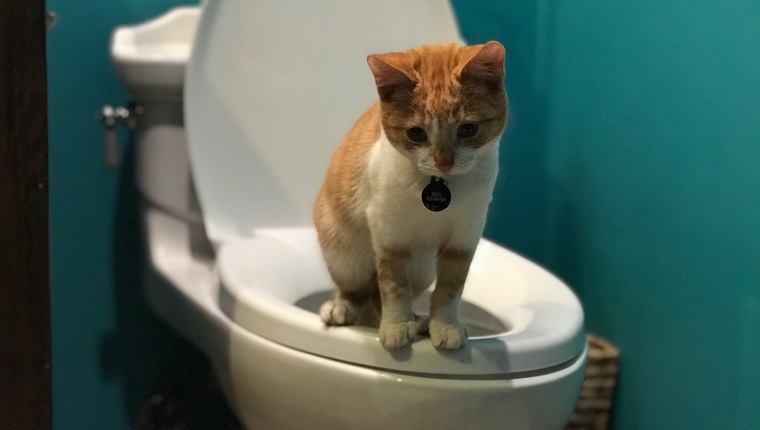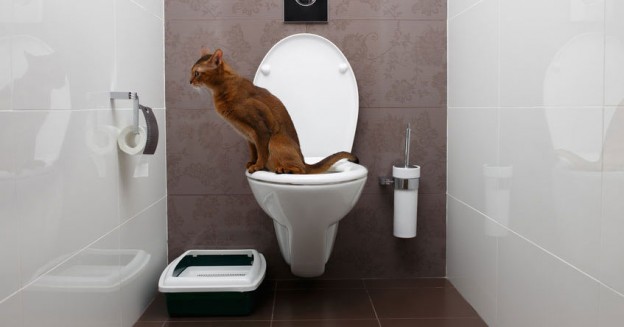Why You Mustn't Flush Cat Poop Down Your Toilet - Maintain Your Plumbing System
Why You Mustn't Flush Cat Poop Down Your Toilet - Maintain Your Plumbing System
Blog Article
The content below about Can You Flush Cat Poo or Litter Down the Toilet? is fairly attention-grabbing. Try it and make your own personal findings.

Intro
As feline proprietors, it's essential to bear in mind just how we throw away our feline pals' waste. While it might seem hassle-free to flush pet cat poop down the toilet, this practice can have harmful consequences for both the atmosphere and human health and wellness.
Ecological Impact
Purging feline poop introduces harmful pathogens and parasites right into the water system, positioning a considerable risk to aquatic environments. These pollutants can adversely impact aquatic life and compromise water high quality.
Health and wellness Risks
In addition to ecological concerns, purging feline waste can also present wellness risks to human beings. Cat feces may consist of Toxoplasma gondii, a bloodsucker that can trigger toxoplasmosis-- a possibly serious illness, specifically for expectant ladies and people with weakened body immune systems.
Alternatives to Flushing
The good news is, there are more secure and extra responsible methods to dispose of cat poop. Take into consideration the following alternatives:
1. Scoop and Dispose in Trash
The most common approach of dealing with feline poop is to scoop it into an eco-friendly bag and throw it in the garbage. Be sure to make use of a devoted litter scoop and dispose of the waste without delay.
2. Usage Biodegradable Litter
Select eco-friendly pet cat clutter made from materials such as corn or wheat. These litters are environmentally friendly and can be securely disposed of in the trash.
3. Bury in the Yard
If you have a backyard, take into consideration hiding feline waste in an assigned area far from vegetable gardens and water sources. Make certain to dig deep adequate to stop contamination of groundwater.
4. Set Up a Pet Waste Disposal System
Buy a pet garbage disposal system particularly developed for cat waste. These systems use enzymes to break down the waste, minimizing smell and ecological influence.
Conclusion
Accountable family pet possession expands past giving food and sanctuary-- it additionally entails correct waste monitoring. By refraining from flushing feline poop down the toilet and selecting alternative disposal methods, we can reduce our environmental impact and shield human health and wellness.
Why Can’t I Flush Cat Poop?
It Spreads a Parasite
Cats are frequently infected with a parasite called toxoplasma gondii. The parasite causes an infection called toxoplasmosis. It is usually harmless to cats. The parasite only uses cat poop as a host for its eggs. Otherwise, the cat’s immune system usually keeps the infection at low enough levels to maintain its own health. But it does not stop the develop of eggs. These eggs are tiny and surprisingly tough. They may survive for a year before they begin to grow. But that’s the problem.
Our wastewater system is not designed to deal with toxoplasmosis eggs. Instead, most eggs will flush from your toilet into sewers and wastewater management plants. After the sewage is treated for many other harmful things in it, it is typically released into local rivers, lakes, or oceans. Here, the toxoplasmosis eggs can find new hosts, including starfish, crabs, otters, and many other wildlife. For many, this is a significant risk to their health. Toxoplasmosis can also end up infecting water sources that are important for agriculture, which means our deer, pigs, and sheep can get infected too.
Is There Risk to Humans?
There can be a risk to human life from flushing cat poop down the toilet. If you do so, the parasites from your cat’s poop can end up in shellfish, game animals, or livestock. If this meat is then served raw or undercooked, the people who eat it can get sick.
In fact, according to the CDC, 40 million people in the United States are infected with toxoplasma gondii. They get it from exposure to infected seafood, or from some kind of cat poop contamination, like drinking from a stream that is contaminated or touching anything that has come into contact with cat poop. That includes just cleaning a cat litter box.
Most people who get infected with these parasites will not develop any symptoms. However, for pregnant women or for those with compromised immune systems, the parasite can cause severe health problems.
How to Handle Cat Poop
The best way to handle cat poop is actually to clean the box more often. The eggs that the parasite sheds will not become active until one to five days after the cat poops. That means that if you clean daily, you’re much less likely to come into direct contact with infectious eggs.
That said, always dispose of cat poop in the garbage and not down the toilet. Wash your hands before and after you clean the litter box, and bring the bag of poop right outside to your garbage bins.
https://trenchlesssolutionsusa.com/why-cant-i-flush-cat-poop/

I'm just very intrigued by How to Dispose of Cat Poop and Litter Without Plastic Bags and I hope you liked my blog post. If you please take the opportunity to distribute this write-up if you enjoyed it. I praise you for your time. Visit us again soon.
Show Details Report this page